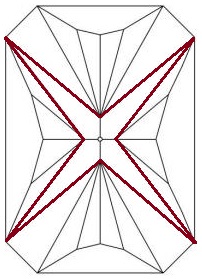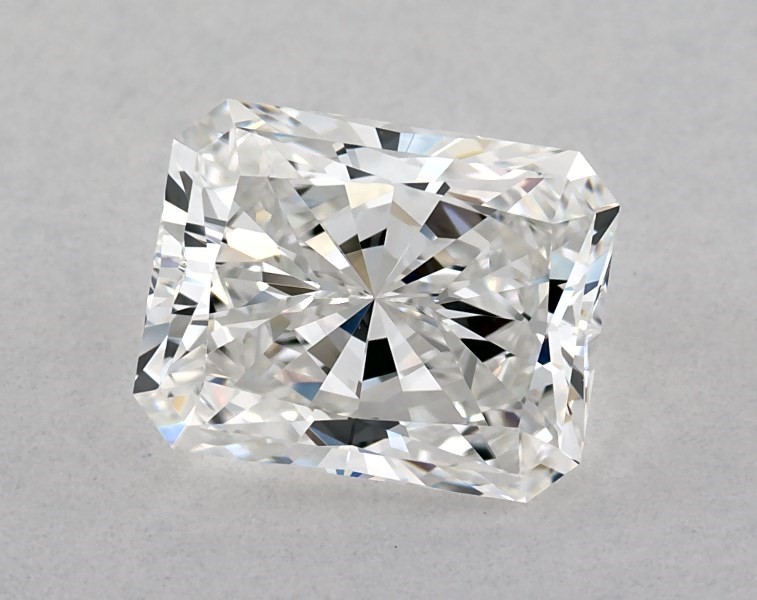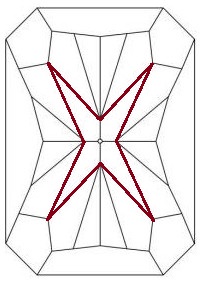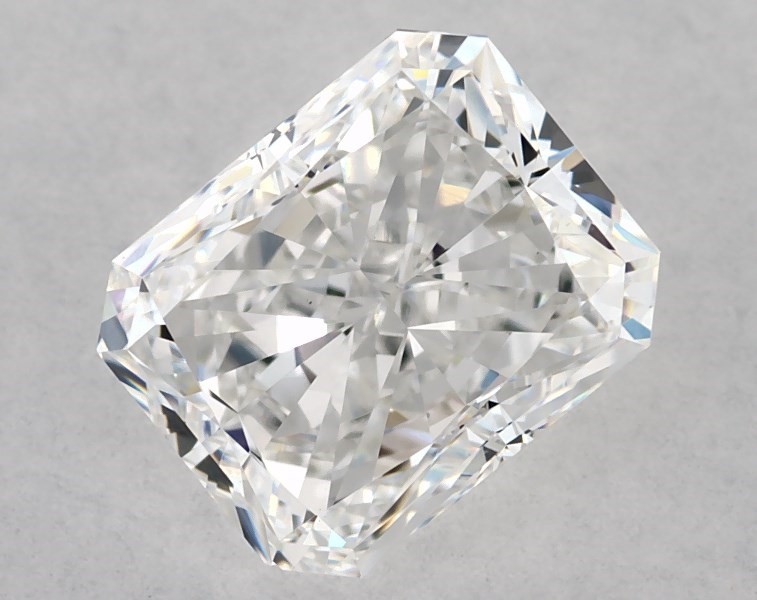| Depth | 67-70% |
| Table | 64-68% |
| L/W Ratio | 1.25-1.40 |
| Pavilion Pattern | Long mains |
Searching for radiant diamonds using these criteria will enrich your results for well-cut diamonds with optimal light performance and a larger than average spread. We automatically highlight such diamonds in our price curves to make the search process easier.
Pavilion Facet Pattern
Radiant diamonds exhibit a lot of variation in how they’re cut, demonstrated by the diversity of pavilion facet diagrams shown on diamond grading reports. Of the many radiant pavilion facet patterns, you should only look for one: the “long mains” pattern.
In the “long mains” pavilion facet pattern shown below, the pavilion facet mains (the “X” highlighted in red) extend all of the way to the edge of the diamond. There’s only one long mains radiant pavilion facet pattern, so this is the only image you need to remember. You can also check the main pavilion facets of the diamond itself.
In contrast, there are many “short mains” pavilion facet patterns in which the “X” doesn’t extend all of the way to the edge of the diamond. The image shown below is the most common short mains pattern, but there are many other types.
Short mains patterns introduce extra facets that chop up the light, often resulting in a watery look. In contrast, the long mains pattern has larger facets that produce bigger flashes of light (shown below). Thus, the long mains pattern shows more scintillation and has better light performance.
Diamonds with long mains also have larger spreads (visual surface area) compared to short mains. For radiant diamonds of the same carat weight, long mains look on average ~5% larger than short mains. For example, the long mains 1.01 E VS1 (6.65×5.21mm) is much larger than the short mains 1.01 E VS1 (6.04×4.85mm). Short mains radiants have been cut to maximize carat weight, hiding carats in a more bulbous pavilion where you can’t see it.
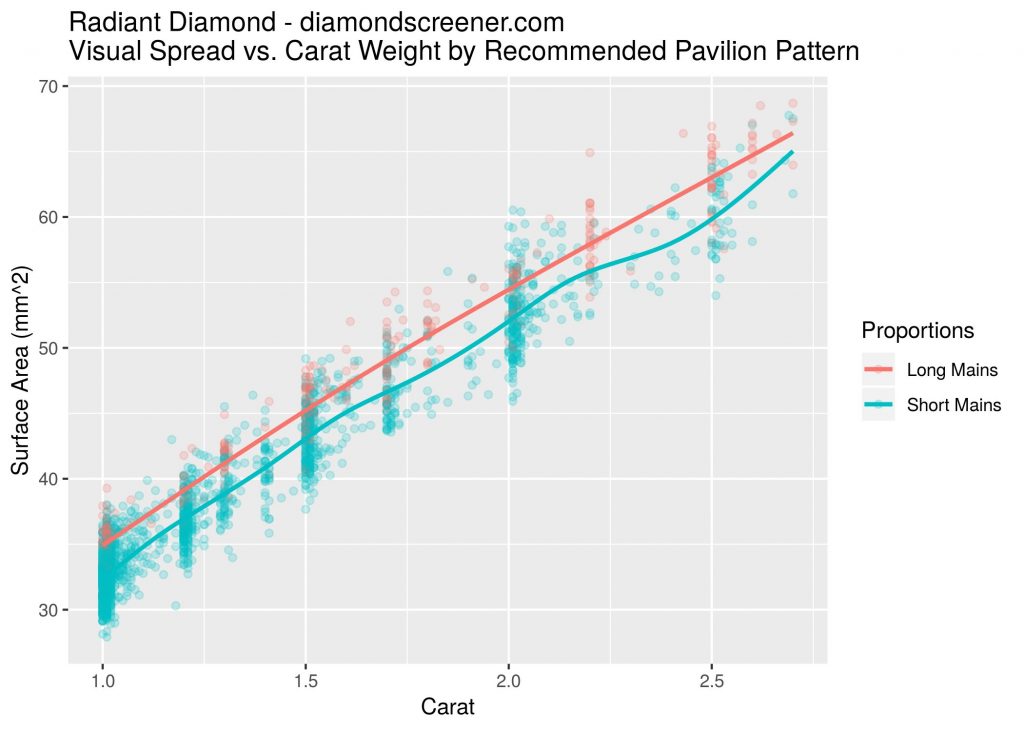
Radiant Depth, Table, and L/W Ratio Proportions
Below is a heatmap showing the counts of depth and table combinations for radiant diamonds available online at James Allen and Blue Nile. Brighter blue indicates more diamonds having that specific depth and table combination. Based on the heatmap, our recommended range of depth 67-70% and table 64-68% (highlighted in green) is based on diamond cutters’ preferences.
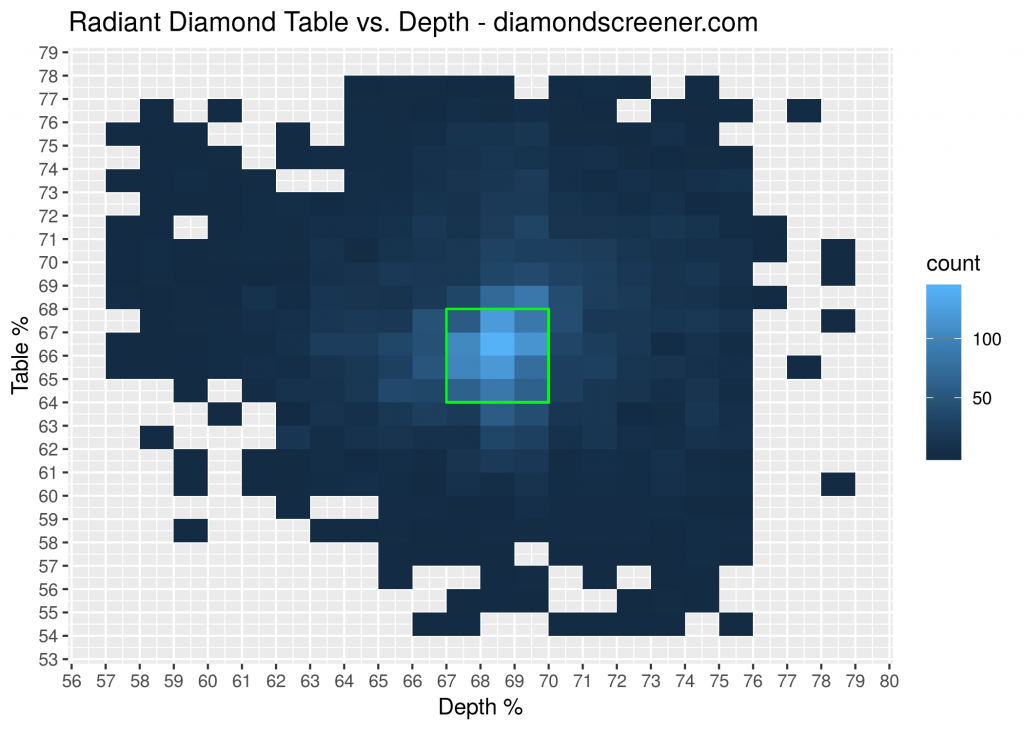
Rectangle is the traditional radiant shape. Although square radiants exist, you might instead consider a cushion or princess, which are traditionally square.
Our radiant L/W ratio recommendation is on the higher end to ensure a rectangular appearance. Length is what gives a rectangular diamond its sense of size.
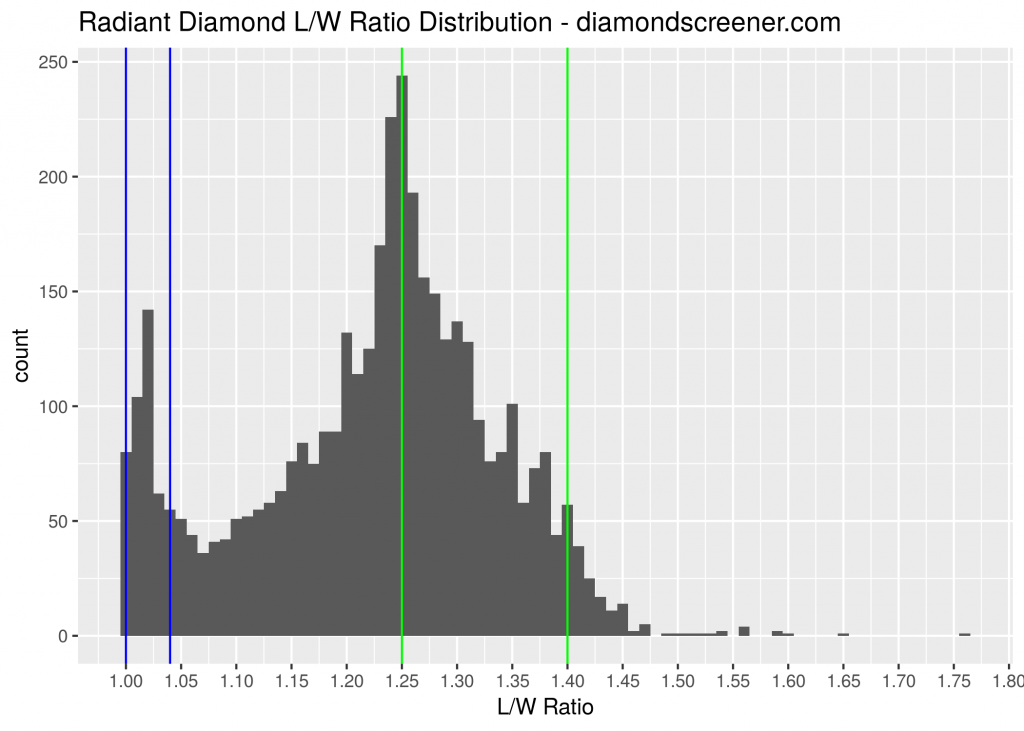
Conclusion
Radiant diamonds with the “long mains” pavilion facet pattern have better light performance and a larger visual spread than the “short mains” pavilion facet pattern. Only 1 in 7 radiant diamonds have the long mains pavilion pattern.
Searching for a long mains radiant with our recommended proportions will enrich your results for beautiful diamonds. To make the search process faster, we highlight such diamonds in our diamond price curves.
